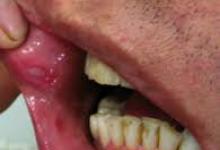The Gender Gap in Rheumatology Leaders Save

Leadership positions in medicine are disproportionately filled by men. Although the enrollment of medical schools are equal male: female or even some have more women (1, 2), 40% of American medical institutions lack programs for recruiting women, or for retention and promotion of female faculty (3).
This may also be true in rheumatology, which is now attracting more women than men as trainees (1). I recently wrote an article in the Lancet about mentoring women in medicine (4) and suggested ideas for improving the gender gap in leadership.
I can relate to why women may not choose to be leaders. From early on in medical school, they may be conditioned to choose lifestyle specialties. I have been fortunate enough to have had children during internship, residency, my clinical fellowship, a research fellowship, and as an assistant, associate and full professor (yes 7 in total). I have personal experience with rounding on the wards with morning sickness and making excuses for disappearing. I have written exams with a baby at home and left the Royal College exam first so I could breast feed. I have had to juggle daycare while on call, have the school call to pick up a sick kid while in a busy clinic or teaching, and have had to run to a code with a stroller at hand.
As a member of my department’s finance committee I have seen salaries where inequities of starting amounts occur despite a standardized template. This is often due to men bargaining more than women – the latter accepting what is offered and the former requesting more.
All junior faculty should be advised to request more than what is offered as all future salaries are based on the initial one and it is the role of the Division Heads in Rheumatology to help in the process for new recruits.
Are we doing better in rheumatology with respect to a gender gap in leadership?
The American College (ACR) Board of Directors consists of Dr. David Daikh (president), Dr. Paula Marchetta (president elect) and 17 members (9 men and 8 women) and also 2 ex-officio members (men), so the odds in ACR leadership are nearly equal (https://www.rheumatology.org/About-Us/Leadership/Board-of-Directors).
Conversely, EULAR (European League Against Rheumatism) presidents since 1947 have all been men (https://www.eular.org/eular_presidents.cfm).
I suggest a call to action to increase awareness and leadership skills for rheumatology trainees and young faculty. It is not that we need equal representation but we should have the best people in leadership including those representing a diversity of ideas.
During the Renaissance, great artists and thinkers changed our world (such as Leonardo da Vinci, Michelangelo, William Shakespeare and Nicolaus Copernicus to name some of the great people). However, women were not in a position to contribute and I assume that we missed half of the great thinkers and artists during that time and many other periods in history.
I don’t want this to keep happening.
References
1. Association of American Medical Colleges. The state of women in academic medicine: the pipeline and pathways to leadership, 2015–2016. https://www.aamc.org/members/gwims/statistics/ (accessed Dec 31, 2017).
4. Pope JE. Mentoring women in medicine: a personal perspective. Lancet;391:520-21, 2018.










If you are a health practitioner, you may Login/Register to comment.
Due to the nature of these comment forums, only health practitioners are allowed to comment at this time.